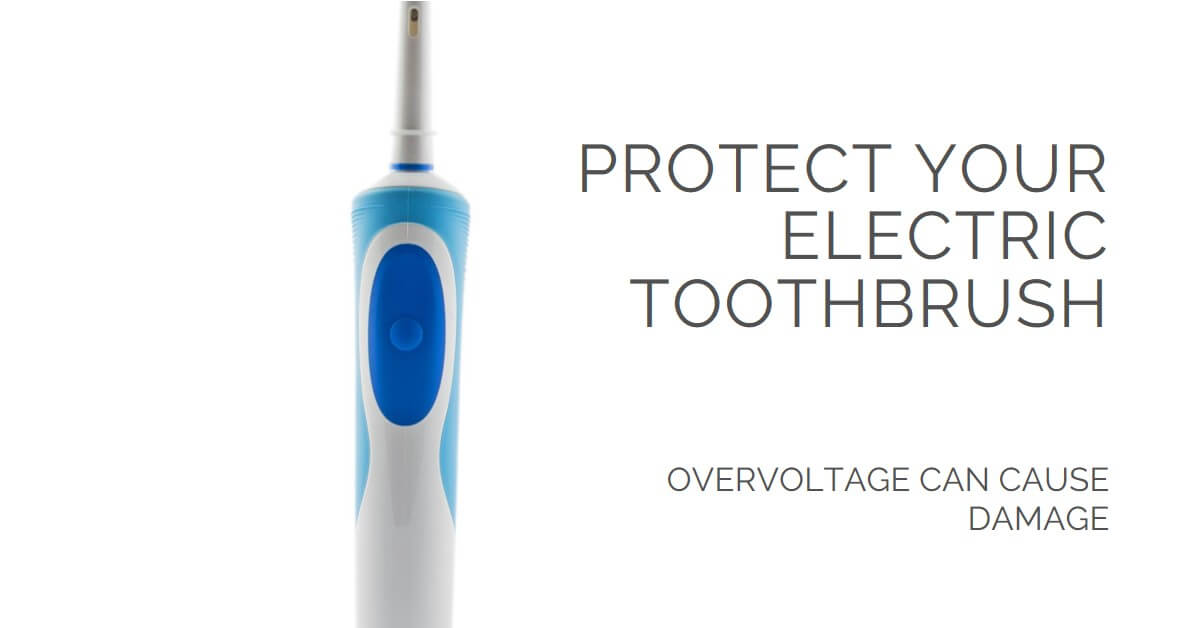Image: “Article Feature Image” by Bing is licensed under CC BY-NC-SA 4.0. Source: Bing Graphic Art. License: CC BY-NC-SA 4.0.
Electric toothbrushes have become a popular choice for maintaining oral hygiene due to their efficiency and effectiveness.
However, it is essential to protect these devices from electrical issues such as overvoltage. Yes, overvoltage can damage electric toothbrushes. Electric toothbrushes are vulnerable to damage when exposed to excessive voltage. Overvoltage can have several negative effects on the components of an electric toothbrush.
This article explores the potential risks of overvoltage on electric toothbrushes, identifies vulnerable components, discusses protective measures, and highlights signs of overvoltage damage.
Understanding Overvoltage
Overvoltage refers to a sudden increase in the electrical potential beyond the recommended level.
It can occur due to various factors, including power surges, faulty wiring, lightning strikes, or issues with the electrical grid.
When an electric toothbrush is exposed to overvoltage, it can lead to adverse effects on the device’s functionality and performance.
Electric Toothbrush Components
Electric toothbrushes have several crucial components, including the motor, battery, and control circuitry.
These components work together to provide the necessary brushing action and functionality. However, these components are susceptible to damage when exposed to excessive voltage.
Risks of Overvoltage for Electric Toothbrushes
- Potential damage to the motor: Overvoltage can cause the motor in an electric toothbrush to malfunction or burn out. This can result in the brush head not moving correctly or stopping altogether, rendering the toothbrush ineffective.
- Impact on the battery life: Excessive voltage can adversely affect the battery of an electric toothbrush. It may lead to reduced battery life or even cause the battery to fail completely. This can result in frequent recharging or the need for battery replacement.
- Malfunctioning of control circuitry: The control circuitry in an electric toothbrush is responsible for regulating various functions, such as speed and brushing modes. Overvoltage can disrupt the control circuitry, leading to erratic behavior, unresponsive buttons, or even complete failure.
- Safety hazards for the user: In extreme cases, overvoltage can pose safety hazards to the user. Faulty electrical components due to overvoltage may cause electric shocks or other accidents while using the toothbrush.
Read also my article: Electric Toothbrushes and Electrocution: Fact vs. Fiction.
Protective Measures
To safeguard electric toothbrushes from overvoltage damage, the following protective measures should be considered:
- Surge protectors and voltage regulators: Plugging your electric toothbrush into a surge protector or using a voltage regulator can help prevent excessive voltage from reaching the device. These devices effectively absorb or regulate voltage spikes, providing a safe operating range for your toothbrush.
- Uninterruptible power supply (UPS): Consider connecting your charging station or electric toothbrush charger to a UPS. This backup power source can protect your toothbrush from voltage fluctuations during power outages or sudden power surges.
- Proper electrical grounding: Ensuring that your electrical outlets and wiring are properly grounded can reduce the risk of overvoltage. Consult a qualified electrician if you suspect any grounding issues in your home.
- Regular maintenance and inspection: Conduct regular checks on your electric toothbrush and charger for any visible signs of damage or wear. Promptly address any issues by contacting the manufacturer or a qualified technician.
Signs of Overvoltage Damage
It is important to be aware of the following signs that may indicate overvoltage damage to your electric toothbrush:
- Performance degradation: Reduced brushing power, irregular vibrations, or inconsistent speed can indicate damage caused by overvoltage.
- Strange noises or vibrations: Unusual sounds or vibrations during operation may indicate that the motor or other components have been affected by overvoltage.
- Battery-related issues: If your electric toothbrush battery drains quickly or fails to hold a charge, overvoltage damage might be a contributing factor.
- Unresponsive buttons or controls: Overvoltage can disrupt the control circuitry of an electric toothbrush. If the buttons become unresponsive, or you experience difficulty switching between brushing modes, it could be a sign of overvoltage damage.
- Burning smell: A burning smell is a significant warning sign of electrical damage, including overvoltage. If you detect a distinct burning odor while using your electric toothbrush, immediately stop using it and seek professional assistance.
Multi-voltage electric toothbrush
To check the voltage compatibility of an electric toothbrush, you can follow these steps. Firstly, refer to the user manual or product specifications provided by the manufacturer.
These documents often mention the acceptable voltage range for the toothbrush. Some electric toothbrushes are designed to be compatible with a wide range of voltages, typically from 110V to 240V, making them suitable for use in various countries with different electrical systems.
In such cases, you can use the toothbrush with confidence, as it will automatically adjust to the local voltage.
However, if the voltage range is not clearly stated or if you are unsure about the compatibility, it is recommended to contact the manufacturer’s customer support for specific guidance.
They can provide you with accurate information regarding the voltage requirements and compatibility of your electric toothbrush model.
Remember, ensuring the correct voltage compatibility is essential to protect your toothbrush from potential damage due to overvoltage or undervoltage.
Warranty Considerations
When purchasing an electric toothbrush, it is advisable to review the manufacturer’s warranty policies. Some warranties may cover damage caused by voltage fluctuations.
Familiarize yourself with the terms and conditions regarding overvoltage protection to ensure you have appropriate coverage.
Conclusion
Overvoltage poses a significant risk to electric toothbrushes, potentially damaging crucial components and compromising their functionality.
By implementing protective measures such as surge protectors, voltage regulators, and UPS systems, and ensuring proper electrical grounding, you can mitigate the risk of overvoltage damage.
Regular maintenance, awareness of signs of damage, and understanding warranty coverage further contribute to the longevity of your electric toothbrush.
Remember, safeguarding your toothbrush from overvoltage is vital for maintaining optimal oral hygiene.
you work With Electricity! Don’t leave empty-handed!
Looking to stay ahead of the game in the world of electrical engineering? Subscribe to my YouTube channel and gain access to exclusive content you won’t find anywhere else!
The staff I recommend (Amazon Affiliate Links to products I believe are high quality):
- Economy 120 Volt/60Hz AC Power Source – Step-Down Voltage & Frequency Converters 1800W
- UNI-T Digital Multimeter Tester UT139C
- 50-Amp Extension Cord for RV “100ft”
- Voltage Stabilizer 110/220v
- Hair Dryer “best selling“
- TOSHIBA EM131A5C-BS Countertop Microwave Ovens
Disclaimer: This contains affiliate links to Amazon products. I may earn a commission for purchases made through these links.




